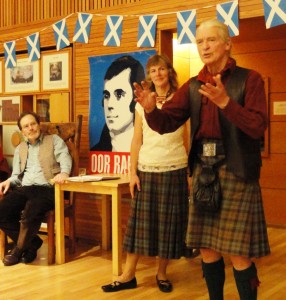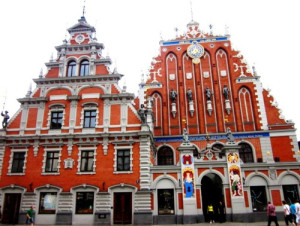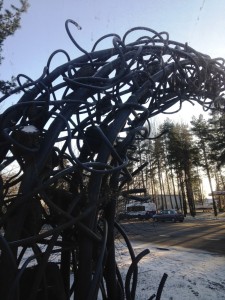Edinburgh, Scotland
From its prehistoric beginning as a hillfort, following periods of Celtic and Germanic influence, Edinburgh became part of the Kingdom of Scotland during the 10th century. It grew through the Middle Ages and has become the Sc otland’s largest town. Edinburgh regularly polls as one of the best places to live, having won more than 12 UK Best City Awards in 8 years to 2013. Edinburgh has the strongest economy of any city in the United Kingdom outside of London and the highest percentage of professionals in the UK. Known primarily for brewing, banking, and printing and publishing in the 19th century, Edinburgh’s economy is now based mainly on financial services, scientific research, higher education, and tourism. As of March 2010 unemployment in Edinburgh is comparatively low at 3.6%, and remains consistently below the Scottish average of 4.5%. with a population of roughly 480,000 Edinburgh has a high proportion of people aged between 16 and 24 than the Scottish average, but has a lower proportion of those classified as elderly or pre-school. Since the 2004 enlargement of the European Union, many migrants from the accession states, particularly Poland and the Baltic states, have settled in the city, with many finding work in the service industry. Edinburgh is home to many influential people in society such as Sir Arthur Conan Doyle, the creator of Sherlock Holmes, and Alexander Graham Bell, the inventor of the telephone. This city is not a current member of the European Union and makes for an interesting case study while analyzing the differences between member and non-member EU states.
otland’s largest town. Edinburgh regularly polls as one of the best places to live, having won more than 12 UK Best City Awards in 8 years to 2013. Edinburgh has the strongest economy of any city in the United Kingdom outside of London and the highest percentage of professionals in the UK. Known primarily for brewing, banking, and printing and publishing in the 19th century, Edinburgh’s economy is now based mainly on financial services, scientific research, higher education, and tourism. As of March 2010 unemployment in Edinburgh is comparatively low at 3.6%, and remains consistently below the Scottish average of 4.5%. with a population of roughly 480,000 Edinburgh has a high proportion of people aged between 16 and 24 than the Scottish average, but has a lower proportion of those classified as elderly or pre-school. Since the 2004 enlargement of the European Union, many migrants from the accession states, particularly Poland and the Baltic states, have settled in the city, with many finding work in the service industry. Edinburgh is home to many influential people in society such as Sir Arthur Conan Doyle, the creator of Sherlock Holmes, and Alexander Graham Bell, the inventor of the telephone. This city is not a current member of the European Union and makes for an interesting case study while analyzing the differences between member and non-member EU states.
An evening at the Scotish Storytelling Centre celebrating Rabbie Burns.




Burns Night Dinner
Our first night we had the chance to celebrate a traditional Scottish holiday, Burns Night. At the Scottish Storytelling Centre, we were taken through the life of Robert Burns through anecdotes of his life and a selection of his poems and songs by three Scottish storytellers and a harpist. We were encouraged to sing along to his songs, and had the chance to try traditional Scottish food. The starter was cock-a-leekie soup, followed by haggis, neeps and tatties and cranachan. The haggis was presented by a storyteller to the room, who then recited the Old to the Haggis before stabbing it and splitting the casing open. Haggis is a sheep’s heart, liver and lungs mixed with onion, oatmeal and spices and then cooked inside a sheep stomach for several hours. The dish was received with mixed reactions from the students, but everyone did try it! The night ended with Robert Burns’ most famous song, Auld Lang Syne. Students and other attendees spontaneously stood hand in hand around the room and sang the chorus several times. Overall, the night was a fantastic way of introducing Scottish traditional culture.
Holyrood Palace
On Saturday morning we had the unique opportunity to tour the Holyrood Palace, the residence of the British royal family when they visit Edinburgh. Using headsets, we were taken through the Palace’s hallways and rooms, where we were able to see and learn about the preserved rooms, furniture, artwork and decorations. Through these, we were able to get a glimpse of royalty. The tour gave a brief history of the significance of British royalty. In particular, we learned about the life of Queen Mary of Scots through touring her chambers and seeing her jewelry and other belongings, and the impact her life had on Scotland.


Rest of Saturday
After the tour of Holyrood Palace students had the chance to tour Edinburgh on their own. Many of the popular sites were Edinburgh Castle and the Edinburgh Museum. Edinburgh Castle lies up the Royal Mile from Holyrood Palace, in Edinburgh’s Old Town. Amongst the more modern restaurants and souvenir shops, the Royal Mile also gives a glimpse of historical sites including churches. Edinburgh Castle offered breathtaking views of Edinburgh, though while we were standing on the battlements there was heavy winds and hail. The Scottish weather lived up to its reputation as being extremely unpredictable, with multiple rain showers, plenty of clouds and a few beautiful moments of sunlight.






Hairy Coo Tour of the Highlands
On Sunday we took a tour of the highlands on an orange-colored bus named Dolly that resembled a hairy highland coo, complete with ginger fringe, horns and a brown tongue. Our fearless leader, bus driver and tour guide, Donald, was excellent, funny, and knowledgeable about all aspects of Scottish history and culture. One of Donald’s goals for the tour was to debunk the popular Mel Gibson film Braveheart, which is very factually inaccurate. On that note, our first stop was the William Wallace Monument. We walked up a hill in the pouring rain to reach the monument, which has 246 steps to the top. William Wallace was an important Scot who stepped up in a time of need in the Scottish fight against the British King Edward I. Unlike how he was portrayed in Braveheart, he was actually a middle class man who dressed well and actually wore pants! He became a thorn in King Edward’s side through guerrilla warfare and after brief success unfortunately was caught, hung, drawn and quartered. He is seen as a hero in Scottish history, and there have 38 memorial/monuments in his honor. It is questionable if he actually yelled ‘FREEEEEDOM’, but we like to think he did. We also passed Stirling Castle. A popular stop was Castle Doune, as it has been used for exterior shots of Winterfell from Game of Thrones and Monty Python and the Holy Grail. We stopped for lunch in Callandar, a quaint highland town. Most of the class had fresh fish and chips. It was obvious geographically that we had truly entered the highlands, due to the change in landscape, most notably the snow-capped mountains. We headed for the mountains in search of the namesake of our bus tour company, the hairy coos. With the watchful eye of Donald, who grew up on a cattle farm, we were able to get up close and personal to the coos. Led by the matriarch Fiona, we were able to feed the coos bread and get an up close and personal look at them and snap some pictures (while avoiding the ‘hairy coo goo’, as they really like bread). Our next stop was the scenic Loch Katrine, which has inspired writers such as Jules Verne. There was snow all around, and we enjoyed a walk around the Loch. Finally, we made our way to Deanston Distillery. As scotch is one of Scotland’s largest exports, this was culturally relevant. It is estimated that 39 bottles of scotch are exported every second. We enjoyed seeing the process of how the scotch is made, and the sheer chemistry and art. Deanston has only 12 employees in their distillery, and make an effort for all of their ingredients to come from Scotland. It was a fitting end to our tour.















 Follow
Follow

















































































































